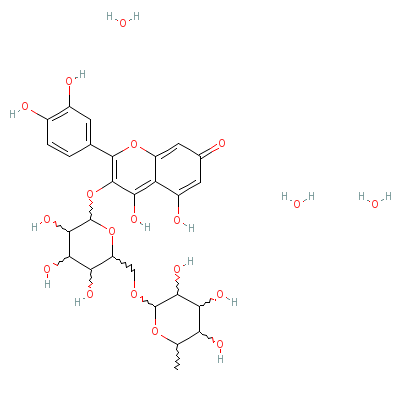Rhinacanthus nasuta (L.) KURZ. |
| |
|
|
Botanical Name |
: |
Rhinacanthus nasuta (L.) KURZ. |
English
Name |
: |
Snake Jasmine |
Family |
: |
Acanthaceae |
| |
General Info
| Description |
 |
|
A diffuse subshrub; branchlets hirsute. Leaves elliptic to oblanceolate, base acute, apex acute; petiole 2 cm. Panicles terminal or in upper axils, divaricate, ending in cymes, peduncle 15 cm; bracts and bracteoles lanceolate. Calyx lobes 5, linear-lanceolate, basally connate. Corolla white, upper lip linear and lower one broader. Stamens 2. Ovary pubescent. Fruit capsule, ellipsoid, with a basal beak. Seeds 4, orbicular, rugose. |
| Herb Effects |
 |
|
Revulsive, depurative, anthelmintic, antiseptic, aphrodisiac, antiparasitic, and anticancerous (plant); antiseptic (root and leaf) and antiparasitic (root). |
Chemistry
| Active Ingredients |
 |
|
Rhinacanthin (root) and rutin (flower) |
| Chemistry
of Active Ingredients |
 |
|
|
 |
Name |
CAS# |
IUPAC Name |
Formula |
Structure |
 |
|
| Rutin |
Not Available |
2-(3,4-dihydroxyphen
yl)-4,5-dihydroxy-3-
[3,4,5-trihydroxy-6-
[(3,4,5-tr
ihydroxy
-6-methyl-tetrahydro
pyran-2-yl)oxymethyl
]tetrahydropyran-2-y
l]
oxy-chromen-7-on
e trihydrate |
C27H36O19 |

|
|
Pharmacology
| Medicinal Use |
 |
|
For skin diseases and as an antiseptic (root and leaf). Used to treat obesity, helminthiasis, septic ulcers, leprosy, eczema, ringworm, prickly heat, herpes, scurvy, inflammation and cancer, goitre. |
| Reference |
 |
|
 Chandel et al., Biodiversity in Medicinal and Aromatic Plants in India. Chandel et al., Biodiversity in Medicinal and Aromatic Plants in India.
|
Dealers
Products
|
|